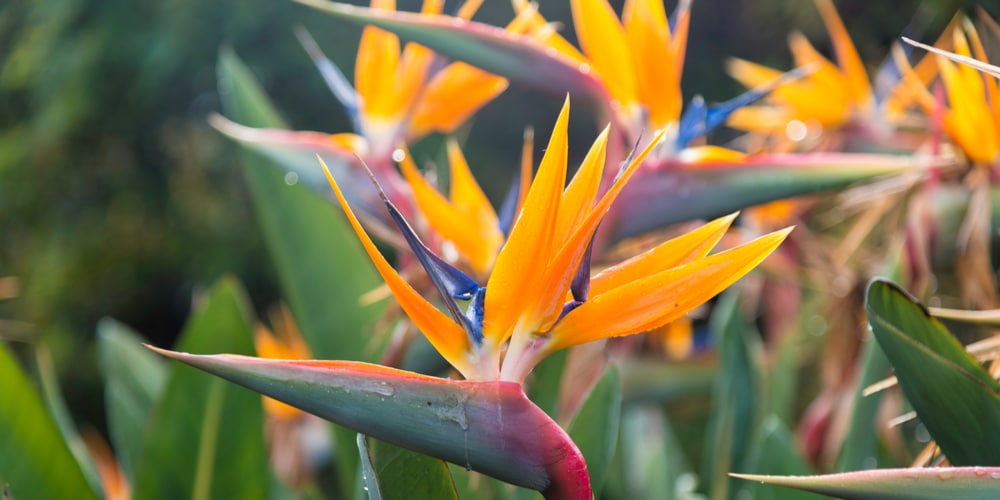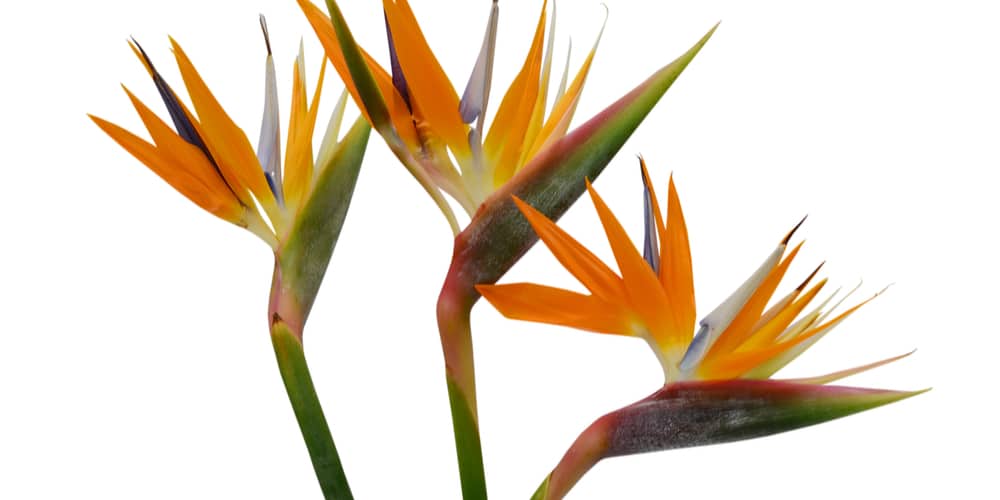If you’ve been blessed with a bird of paradise plant, then you want to keep it healthy and happy!
These stunning plants are known for their large, brightly colored flowers and can brighten up any room. However, if your plant starts to get root rot, it can be challenging to correct the problem.
Keep reading for information on what causes this issue, how to identify it, and how to treat it!
Root Rot On Birds Of Paradise
Root rot is a common problem with birds of paradise plants. It’s caused by too much moisture in the soil, which can lead to fungal growth. This can be tricky to deal with because you need to ensure your plant gets enough water – but not too much!
If you think your plant might have root rot, the first thing to do is check the roots. If they’re brown or mushy, that’s a bad sign. You might also notice that your plant is wilting, even when the soil is moist.
Signs Of Root Rot
Root rot is a severe problem for any plant, and birds of paradise are no exception.
Several signs indicate that a bird of paradise has root rot, including yellowing or wilting leaves, brown spots on the leaves, and stunted growth.
Brown and Soft Roots
Regularly check your Birds of Paradise’s roots to ensure they’re healthy. Examine your plant’s condition regularly, mainly if it appears sickly, lifeless, or distressed. The roots are the first to go in any case. A healthy bird of paradise has numerous long, succulent roots of various hues.
Brown or rotten roots are an indication of root rot. They’re frequently soft and mushy to the touch. The roots may have a distinct, unpleasant odor that your nose may detect.
Mushy and Swollen Stem
The stem of a bird of paradise is just as crucial to its health as the roots. If you think your plant might have root rot, check the stem for signs of damage. A healthy stem is firm and upright. If the stem is mushy or swollen, that’s a sign that something is wrong. The stem may also be discolored or have brown spots.
Wilting
One of the most common signs that a bird of paradise has root rot is wilting. This can happen for several reasons, but the most likely cause is that the roots are not getting enough oxygen. When roots cannot take in oxygen, they start to die, and the plant will begin to wilt.
Stunted Growth
One of the first signs of root rot is stunted growth. The affected plant will produce smaller leaves and fewer flowers than usual. In severe cases, the plant may stop growing altogether.
Causes Of Root Rot
There are several reasons why a bird of paradise might develop root rot. The most common cause is overwatering. If the soil is constantly wet, it can lead to fungal growth, damaging the roots.
Another cause of root rot is planting the bird of paradise too deeply. If the plant is buried too deep in the soil, the roots may not be able to get enough oxygen. This can also lead to fungal growth.
Poor drainage is another issue that can cause root rot. If the soil does not drain well, the roots may sit in water for too long, leading to fungal growth.
Inappropriate container size can also cause root rot. If the plant is in a pot that’s too small, the roots may not have enough room to grow. This can lead to the roots getting crowded, which can damage them.
Finally, root rot can be caused by using too much fertilizer. If you use too much fertilizer, it can build up in the soil and damage the roots.
Treating Root Rot
If you think your bird of paradise has root rot, there are several things you can do to treat it.
The first thing you need to do is remove the plant from the pot. Carefully loosen the roots and shake off any excess soil. If the roots are too damaged, you may need to trim them back.
Once the plant is out of the pot, you need to inspect the roots and determine how much damage has been done. If more than half of the roots are damaged, it’s best to discard the plant.
If only a few of the roots are damaged, you can try to save the plant by replanting it in fresh soil. Be sure to use a pot that has good drainage and is the appropriate size for the plant.
Once you’ve replanted the bird of paradise, water it well and give it plenty of light, avoid overwatering, and let the soil dry out between watering. With proper care, your plant should recover from root rot.
Bird of paradise root rot: Final Thoughts
Don’t despair if your bird of paradise plant shows signs of root rot, don’t despair. With a bit of care and attention, you can get it back to good health in no time. Just be sure to act quickly and follow the steps outlined above.
Related Article: How to Make Well Drained Soil?

